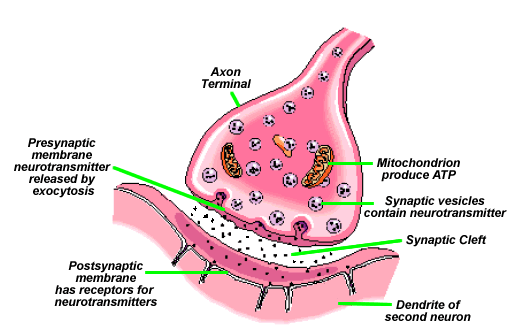Synapse structure and function
In Nervous system, the synapse is a structure of connection that allows neuron to pass an electrical or chemical signal to the other cell. Each neuron has many synapses which connect with many other neurons, and if the human brain holds billions of neurons. It's very small, but also extremely complex.
Santiago Ramón y Cajal stated that neurons are not continuous all through the body, yet still communicate with each other, an idea termed as the neuron doctrine. The term "synapse" comes from "synaptein", which Sir Charles Scott Sherrington coined from the Greek "syn-" ("altogether") and "haptein" ("to clasp").

Figure:Synapse structure and function
The Synapses are necessary to neuronal function: neurons are cells which are specialized to pass signals to separate target cells, and synapses is the mean by which they do so. At synapse, the plasma membrane of signal-passing neuron comes into close with the membrane of the target cell. Both presynaptic and postsynaptic sites hold extensive arrays of molecular machinery which link the two membranes altogether and carry out the signaling process. In numerous synapses, the presynaptic section is positioned on an axon, but a fewpresynaptic sites are positioned on a dendrite or soma. The Astrocytes also replace information with the synaptic neurons, reacting to synaptic activity and, in turn, regulating the synaptic transmission.
There are two basically various types of synapses:
Chemical synapse
The presynaptic neuron discharges a chemical known as the neurotransmitter which binds to receptors positioned in the postsynaptic cell, generally embedded in the plasma membrane. The neurotransmitter may begin an electrical response or a secondary messenger pathway which may either excite or inhibit the postsynaptic neuron.
Electrical synapse
The presynaptic and postsynaptic cell membranes are connected by special channels known as gap junctions who are capable of passing electric current, sources voltage changes in the presynaptic cell to induce voltage changes in the postsynaptic cell. The main benefit of an electrical synapse is the fast transfer of signals from one cell to the next.